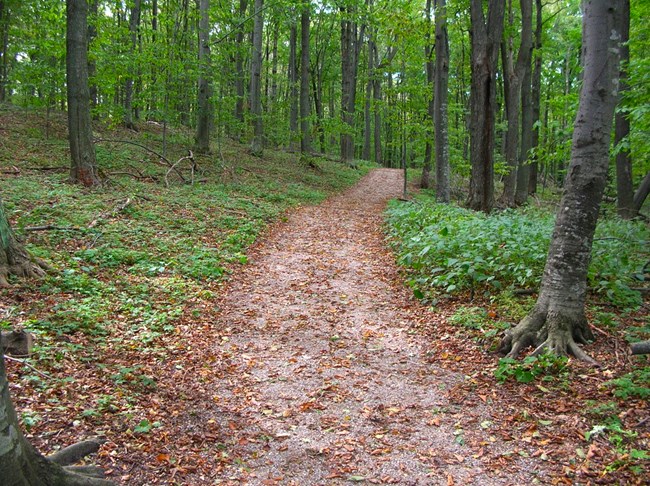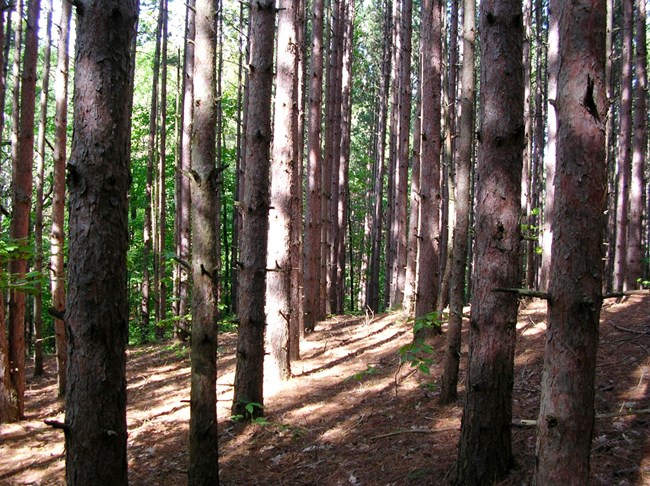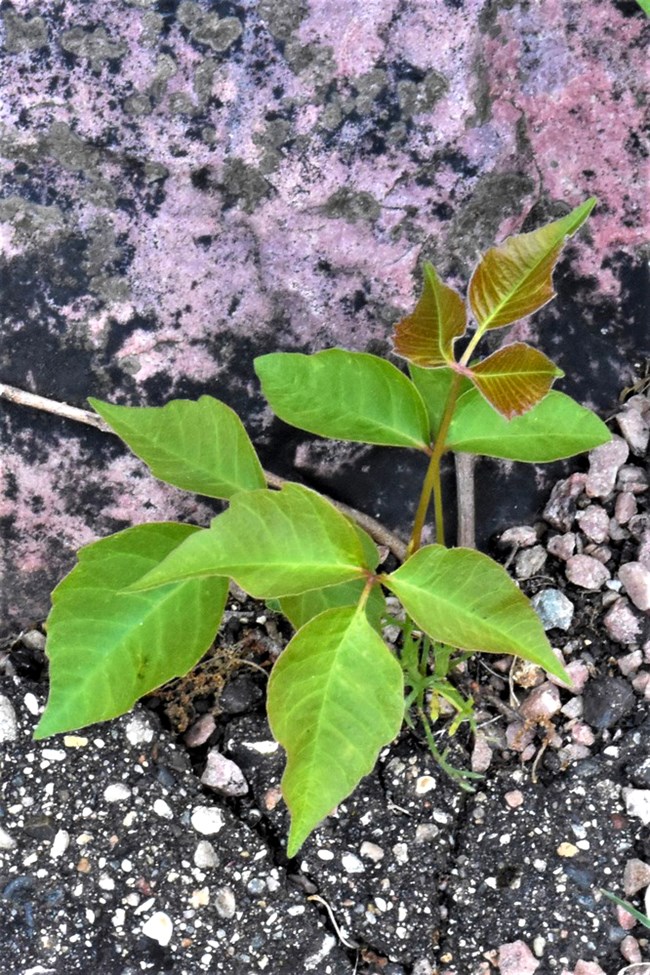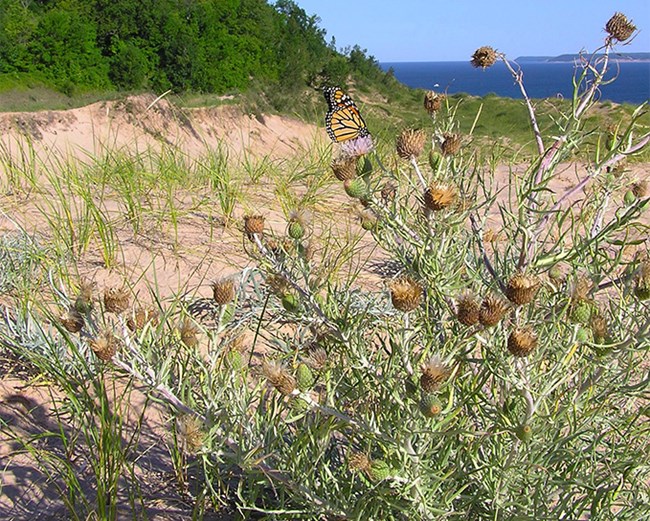|
Sleeping Bear Dunes has five distinct plant “zones” in the park. Each of these areas have unique plants that are specially adapted to thrive in their environment. Beech/Maple Forest
Found throughout Sleeping Bear Dunes, this zone is found in areas with stable soil. These forests have typically gone through ecological succession, which is a change in many different plant species over hundreds of years. American Beech TreeBeech trees are one of the two main trees in the beech/maple forest. It can easily be identified by its smooth light grey bark. Beech bark disease, an invasive insect that allows the tree to be infected by deadly fungi, is currently killing many of the beech trees in the park. Sugar MapleOne of the two main trees in the beech/maple forest, sugar maple leaves are easily identified due to the fact that they closely resemble the maple leaf on the Canadian flag. Their bark is also dark brown that is thick and has deep valleys between each plate. The sugar maple is known for its bright colored leaves in the fall and for providing humans with maple sugar. Black Cherry TreeA black cherry tree can be identified by its black or dark grey bark that is broken and looks like burnt cornflakes. The cherries on the tree are a part of the diet of many of the forest’s mammals, birds, and people. Pine/Oak Forest
The pine/oak forest is a stable community that is able to thrive for a long time unless humans or fire damage the environment. This forest system is dominated by trees that reach for the sunlight, while mosses and ferns thrive on the ground. Red PineThe red pine is a conifer, meaning it keeps its leaves, or needles, all year long. Red pine has reddish, grey bark that is scaly. Red pines also have 1 to 2 inch long pinecones. White OakContrary to its name, white oaks don’t have white bark, rather it is light gray. The leaves of white oaks have completely rounded points unlike other oak species. The acorns of the white oak provide a great food sources for many creatures in the forest. WintergreenWintergreen is a shrub that have bright red berries. When the leaves are crushed they give off a smell very similar to mint. Wintergreen flavoring is also used in gum, mints, and toothpaste. Its oil can be used to relieve sore muscles, among other things. Shrub Zone
This zone is usually found on old dunes that have protection from the wind. The age of the dune allows more organic matter to be mixed with the sand, allowing hardy low shrubs and bushes to grow. Poison IvyKnown for its “leaves of three” this plant likes to grow in areas that allow it to get sunlight. Although called ivy, it is actually part of the cashew and pistachio family. BuffaloberryWith its yellow-red berries, the buffaloberry bush attracts songbirds to its branches. The roots also have nitrogen fixing nodules that enrich the low-nitrogen sand of the shrub zone. Evening PrimroseThe evening primrose is a pioneer species, meaning it is one of the first plants to grow in the dry, sandy soil of the shrub zone. The primrose flowers open and close in the evening to take advantage of pollinators. Active Dune
The wind on active dunes make it hard for plant life in this zone. Wind blows around grains of sand constantly, making it hard for plants to establish themselves. Once a few pioneer species manage to make the dune their home, they bind the sand making it easier for other plants to set down roots in the area. Dunes, however, are not permanent. They are constantly shifting and eventually the dunes will march on. Pitcher’s ThistlePitcher’s thistle likes the windy, dry sand of the active dune zone. After growing for several years, the Pitcher’s thistle will bloom exactly once in its lifetime. Due to land development and invasive species, this plant is on the Federal list of threatened species. Beach PeaBeach pea is a snack for many animals that live in or near the active dune zone. It survives in the active dune zone by using is long tendrils to latch on to nearby dune grasses. Beach GrassBeach grass is able to catch and bind wind-blown sand with its quickly extending roots. When lots of beach grass establish themselves, a large mat of roots is formed. This makes it easier for other plants to establish themselves in this zone. BeachThe beach is the, generally flat area between dunes/forests and the water’s edge. Plants that call this place their home live a hard life. They are constantly being torn at by waves that roll up onto the sand. American Sea RocketThe American sea rocket is one of the only plants that call the beach its home. It is a small shrubs that grows from fresh seed each year. The plant keeps moisture in its fleshy leaves, allowing it to survive in its dry zone. When it is time to release it seed, the waves of the lake carry the rocket-shaped specimens to a new location. |
Last updated: October 4, 2024
